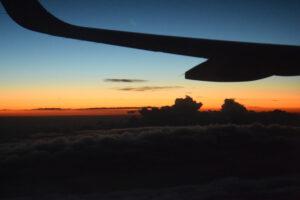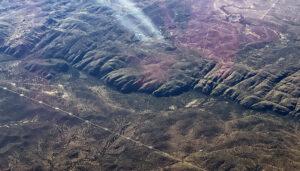On the plane flights to South Africa: A reflective prelude before I leave on this amazing adventure
The flying portion of this journey will take me more than 10,000 km from home, into the southern hemisphere, down to the southern tip of Africa, Cape Town South Africa. The entire journey will eclipse more than 17 hours of me flying high above the clouds, with a 6-hour flight to the UK, a three-hour stopover and then an 11-hour flight to Cape Town. The first stop of the journey will take me to the non-exotic place of Heathrow Airport, a mesh of terminals nestled in the land of Shakespeare and Milton. The next part is an 11-hour flight that will transport me south of the equator to South Africa, the home of the largest land mammals on Earth.

I have always enjoyed flying. For humans, it is still such a novelty, as it has only been in the last hundred and twenty years or so that we can soar higher than the mightiest birds and above the highest mountains. I never take for granted such unique opportunities for seeing Mother Nature at her best. Just imagine, just a little more than a century ago, the mightiest king or most ruthless emperor could not give their kingdoms or empires away for the sights that we behold every time we take flight in a plane. For me, it is a glorious opportunity to visually feast on our world. In fact, the view from the plane allows me to look down on our planet from miles away, to spy on her great majesty in a completely new way. So, I always try to get a window seat as it provides a front-row seat to the beauty of Mother Earth. In fact, I like to play a little game when the plane takes off so I can get into the thrill of lifting off the ground. So I try to imagine what someone who lived before plane flights would say and feel. One of my favorite heroes is Davinci, the great inventor, creator, and artist. Just think of what questions he would ask and the wonder he would feel as the plane suddenly started to accelerate down the runway, then the astonishment as the plane quickly starts to rise after its wheels leave the ground. He would gaze down and see that within moments cars look like small little models. I wonder what his thoughts would be as the plane began to pierce the clouds and then soar above them. I play this little game to never take these moments for granted.
I also love to watch sunsets and sunrises as the “Little Prince” has long been a hero of mine and so I try to make sure that I sit on the correct side of the plane for viewing it. When I was on the flight to Cape Town, I had a window seat on the left side of the plane.

This was not only for the sunrise but also for my first glimpses of the beautiful constellation called the Southern Cross. A set of four brilliant diamonds set in a sea of black sky. It is not like our northern counterpart, the north star, which is exactly aligned with Earth Axis and so it appears fixed to the same point in the sky frozen in the sky unable to move. The Southern Cross, in contrast, is close but not perfectly aligned with the earth’s axis, so it spins around like all the other stars and constellations in the sky, albeit quite close to the southern axis. Whenever I travel to the southern hemisphere, the Southern Cross has been like a traveling companion, a familiar site in often strange, new lands.
When I awoke after a few hours of slumber, I gazed out of the window and saw that we were over land, in this case over the western part of Africa. What I love about looking down over the magnificence of our planet below is that the rock formations are far enough away so the patterns are more obvious. Rocks that are sometimes twisted and contorted or in other cases laid down as a layer cake telling a story about Mother Earth. For this flight, I woke up with a cliff of rocks that rose hundreds of meters above the flat plains that laid in front of it. This escarpment is the result of less sturdy rocks at the base of the escarpment that are easier to erode from Mother Nature’s relentless erosive powers of wearing down the rocks that dare to rise high above the earth. The rocks that make up the cliff are more resistant to being broken down by weathering of mother nature.

In fact, every mountain and valley has a story to tell. It is a rich story that can span millions to billions of years. Just thinking of the vastness of time when we talk about geologic processes, can both humble us while at the same time bringing such awe and wonder about the beauty and power of the nature around us. Each and every story has a profound, sometimes dramatic, and even catastrophic tale of how it came into being. Soaring mountains are slowly transformed down to small hills, all crafted by Mother Nature’s hand over millions to billions of years. They are laid out like a picture book that we can read to learn and understand the history of our planet.
However, to read this book written by the forces of Mother Nature, we have to first learn to read the language of Mother Earth, which is ……….
GEOLOGY.
If we can learn the language of Mother Earth and listen carefully to her words, we can comprehend and understand what she is trying to say to us. When we do this, we truly start to hear Mother Earth speak to us about her wondrous life and it is only then that we can begin to fully appreciate the incredible majesty of how our own planet has evolved over the eons of time.
I wish I could describe things so eloquently. I hope to be traveling to Johannesburg in 2 wk so I will ask to be seated on the left. Thank you.